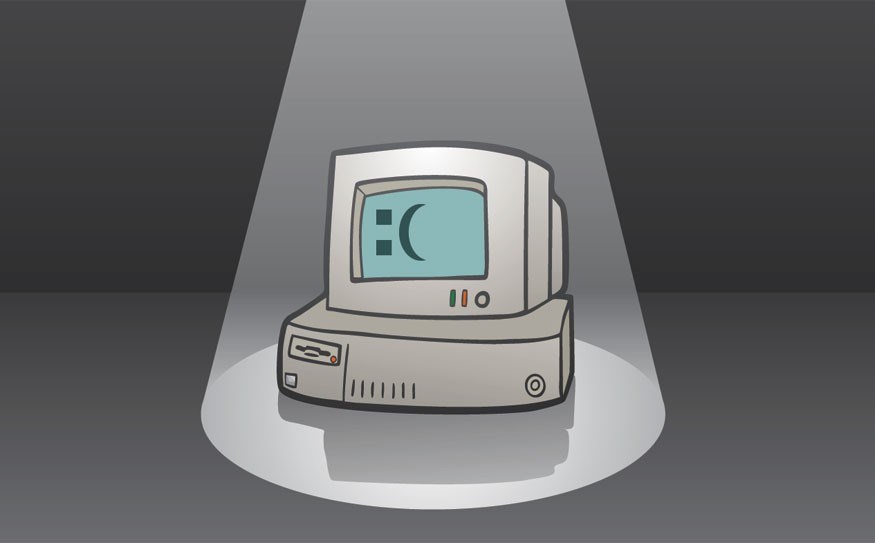Despite owning the last few generations of processor development, Intel Corporation is actually in a bit of a slump. Their last quarterly report was marked by a continued declines in revenues and more missed forecasts, which were already adjusted downward to reflect the general decline in PC sales.
Overall, the last quarter revealed an overall drop in desktop computer sales of 13.8 per cent, the 10th quarter in a row where PC sales have dropped below the same quarter the previous year. That's two-and-a-half years of declines, which more or less aligns with the rise of the tablet and smartphones.
Competition is an issue, although Intel's main competitor — Advanced Micro Devices, or AMD — isn't doing so well either. There are other players in the market that are leapfrogging the Intel/AMD model by making their own chips using a set of standards created and maintained by ARM Holdings. Anyone can buy the rights to use ARM architecture in their portable devices, and many — including Intel, AMD, Samsung, Texas Instruments, Analog Devices, Atmel, Freescale, Nvidia, Qualcomm, STMicroelectronics and Renesas — are already making and selling chips.
I'd argue that the ARM approach to licensing chip designs is just as responsible for the declines at Intel and AMD as the decline in computer sales. The small-scale app model has taken the world by storm, while standards like HTML5 are optimized cross-platform to make it possible to design software and games that don't need a lot of excess software or computing power.
ARM has all but succeeded in becoming the universal standard for small applications and has clearly won this round. By 2015, the company is on track to have ARM-based processors in over half of all tablets, mini notebook computers and other mobile PCs on the market.
Meanwhile, Intel and AMD are continually locked in a battle to build the most powerful desktop PC processors ever created, which are important to gamers, 3D graphic designers, film editors, lab researchers and other power users, but far less important to the majority of people out there that use computers for email, browsing the web and Office-type applications. Overclocked, multicore, multithreaded processes make as much sense to most people as putting a Lamborghini engine into their lawnmower.
The overall concept of a desktop PC is also less sound than it used to be. I know people that use their televisions and low-end media PCs and accessories to do most of their computer work, and many others that have opted instead for more portable, but less powerful, laptops.
Complicating matters is Apple's rise to the top. In the last generation a lot of people have opted for MacBook laptops to go with their iPhones and iPads because it makes sense to stick with a single operating environment and, let's face it, Apple makes cool products that (for a period of time I'd argue is drawing to a close) made you cooler by association. But by buying into Apple, people are buying a premium brand and after spending $600 on an iPhone, $800 on an iPad and $2,000 on a MacBook Pro, I'd imagine people have little appetite to spend big bucks on a desktop computer as well — especially one that runs on Windows and doesn't work as well with all of their other devices. If they did buy desktops, then they probably bought premium iMac all-in-one PCs that don't necessarily use the latest and greatest processors or graphics cards on the market.
Windows 8, and its inability to inspire people to go out and buy new PCs, is also being blamed for declines at Intel and AMD. Windows Blue, the next update, is supposed to address many of the shortcomings of Windows when it's released this summer but right now W8 is considered to be a lost year by many.
As well, PC gamers are a hardy bunch and a reliable market for chip manufacturers, but even that segment is not what it should be with consoles delivering similar performance for a price ($300 to $400) that's a fraction of what a high-end gaming rig costs ($1,500 to $2,500 and up). Hardcore gamers will continue to be hardcore, but it's hard to bring in new blood at that price point when the economy's sucking wind.
It could get worse, potentially: Dell is working on a "PC on a stick" concept where all of your files and programs would live in the cloud, and all you would need to use to access them is a custom USB stick with some data on it that could turn any terminal in the world into your own personal desktop. Processor speed is almost meaningless when all of the heavy lifting is being done on Dell's servers.
All these things said, there will always be a desktop PC market, and a market for Intel and AMD processors — it just won't be as big as it's been in the past.
For myself, my next computer purchase will absolutely be a desktop with a huge HD screen, and maybe two screens, so I'll have more room to multitask — an experience that's miserable on most laptops, and even worse on tablets. I suspect that others are in the same boat after trying to replace their PCs with laptops, tablets and gadgets, and likewise failing miserably.




